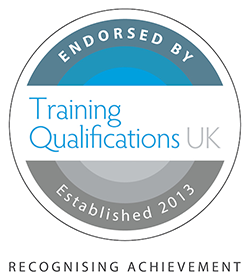- Home
- First Aid Instructor Courses
- Other Courses
- Mental Health at Work Instructor
- Moving and Assisting Instructor
- First Responder On Scene
- First Response Emergency Care FREC3
- Manual Handling Instructor
- Oxygen Therapy Administration
- Management Anaphylaxis
- Health and Safety Level 3 Online
- Nebosh Incident Investigation
- IOSH Managing Safely
- Food Safety Level 3 Online
- Online Training Courses
- Teaching and Assessing
- Contact Us
- Course Dates and Bookings

Paediatric First Aid Instructor Training
To ensure that you have the knowledge and confidence to deliver courses in first aid for all age groups, we have always included Paediatric First Aid Instructor in all of our first aid trainer courses. If you want to become a freelance trainer then it also increases your opportunities to deliver training.
We can deliver Paediatric First Aid Instructor as a stand-alone qualification, for groups of 6-12 persons. This can be incorporated with our Award in Education and Training, for any delegates who do not hold a formal teaching or training qualification. If you would like more information about the options for learning to teach this course in house, please call us on 01206 805380 for more information.
Course Information
Included in our First Aid Instructor Training Open and Onsite Courses
Stand-alone Paediatric First Aid Instructor Courses
- Group Course Locations: Colchester, Essex. Or onsite at a suitable premises you provide.
- Course Price: Dependent on location, numbers and qualifications held, please call to discuss.
- Course: 2 Days Classroom Training / 8 hours online Training (more if the Award in Education and Training is required)
Included
- E-learning video based Paediatric First Aid Course
- Award in Education and Training - if required (additional fee applies)
- Eight months access to online instructor preparation course
Prerequisites
- Non if completing as part of our first aid courses
Standalone Course Entry Requirement
- Proof of acceptable teaching qualification
- Delegates Minimum Age: 18

Paediatric First Aid
Delivered as a blended qualification where the theory is covered in a video-based e-learning environment, where topics are broken down into segments, with quizzies to help to check that information is being retained. The course covers all of the topics in the Paediatric First Aid Course including:
-
Introduction to Pediatric First Aid:
- Overview of pediatric first aid principles.
- Importance of quick and appropriate response in pediatric emergencies.
-
Scene Safety and Assessment:
- How to assess the safety of the environment.
- Initial assessment of the situation and potential hazards.
-
Emergency Action Steps:
- Guidelines for activating emergency medical services (EMS).
- When and how to call for help.
-
CPR (Cardiopulmonary Resuscitation) for Children and Infants:
- Hands-only CPR for children and infants.
- CPR with rescue breaths for children and infants.
-
Choking in Children:
- Recognizing signs of choking in different age groups.
- Techniques for clearing airways in children.
-
Breathing Emergencies:
- Recognition and response to asthma attacks and other breathing difficulties in children.
-
Allergic Reactions and Anaphylaxis:
- Identification of allergic reactions.
- Administration of epinephrine auto-injectors.
-
Bleeding and Wound Care:
- Control of bleeding and wound care.
- Recognition and treatment of different types of wounds.
-
Burns:
- Assessment and treatment of burns.
- Differentiating between first, second, and third-degree burns.
-
Fractures and Musculoskeletal Injuries:
- Recognition and first aid for fractures and musculoskeletal injuries in children.
-
Seizures:
- Recognition and response to seizures in children.
- Ensuring safety during a seizure.
-
Head Injuries:
- Assessment and initial management of head injuries in children.
-
Poisoning:
- Identification of common household toxins.
- Appropriate first aid measures for poisoning.
-
Temperature-Related Emergencies:
- Recognition and treatment of heat-related and cold-related emergencies.
-
Childhood Illnesses and Infections:
- Common childhood illnesses and infections.
- First aid measures and when to seek professional medical help.
-
Injury Prevention:
- Strategies for preventing common childhood injuries.
- Creating a safe environment for children.
-
Documentation and Reporting:
- Importance of accurate documentation.
- Reporting incidents to parents or guardians and, when applicable, medical professionals.

